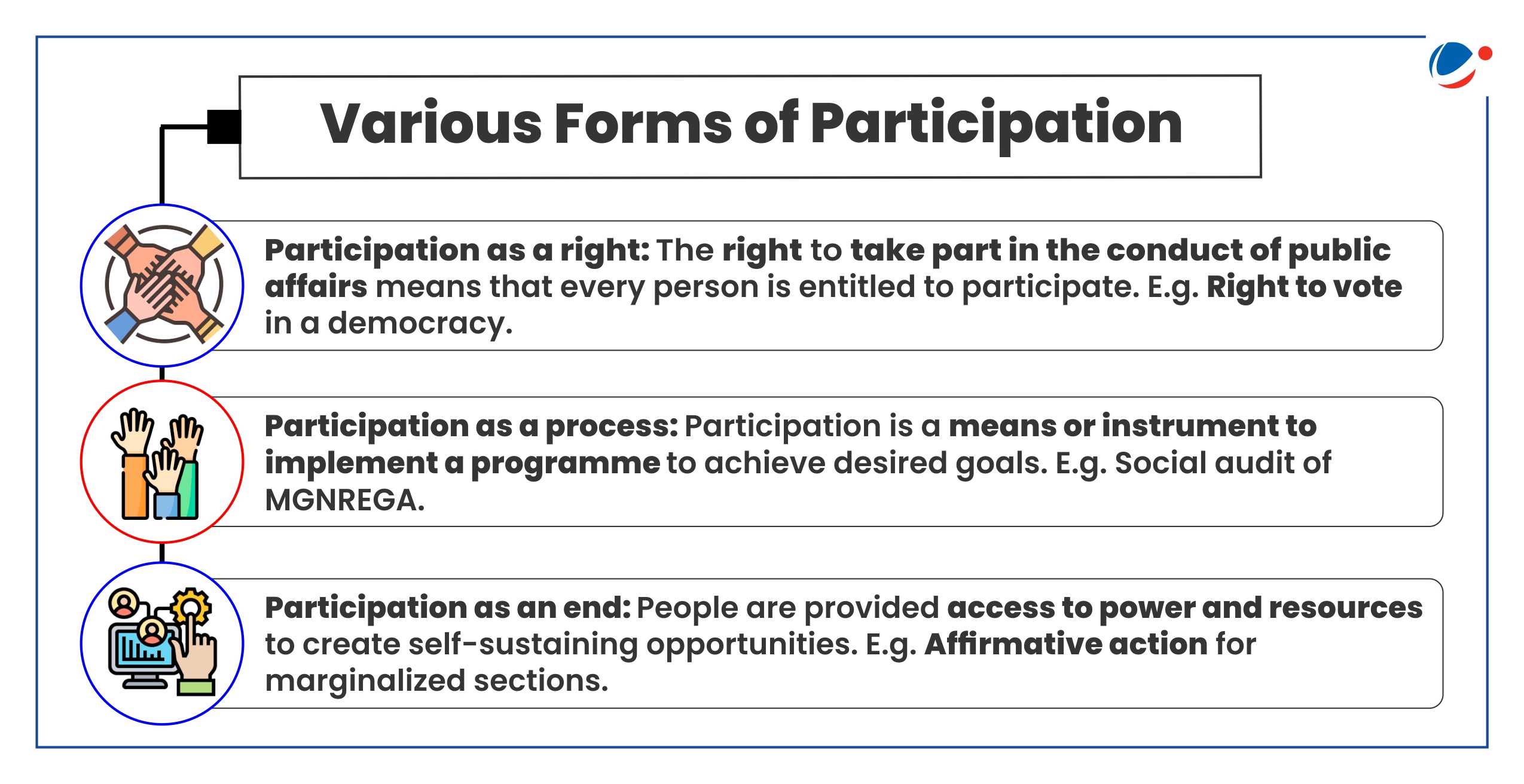Why in the news?
Ministry of Panchayati Raj launched the People's Plan Campaign (Jan Yojana Abhiyan) for the preparation of Panchayat Development Plans (PDPs) for 2025–26.
About Jan Yojana Abhiyan or People's Plan Campaign (PPC)
- Aim: To accelerate people's participation in the process of preparation of the Panchayat Development Plan.
- Launched: Rolled out as 'Sabki Yojana Sabka Vikas' by the Ministry of Panchayati Raj on 2nd October 2018.
- Implementation: At all three tiers of Panchayats with the active involvement of Elected Representatives, Government Frontline workers, Community-Based Organizations (CBOs) like Self Help Groups (SHGs) and other stakeholders.
- Components of the campaign:
- Structured Ward Sabha/ Mahila Sabha/ Gram Sabha/ Block Sabha / District Sabha to be held for preparation of Gram Panchayat Development Plan (GPDP), Block Panchayat Development Plan and District Panchayat Development Plan for FY 2025-26.
- Preparation of Gram Sabha wise calendar and identification of Thematic developmental gaps based on the Panchayat Development Index (PDI), to be presented in the Gram Sabha.
- Thematic approach is based on localization of Sustainable Developmental Goals (SDGs) by adopting a 'Whole of Government and Whole of Society approach.'
- PDI is a multi-domain and multi-sectoral index that is intended to be used to assess the overall holistic development, performance & progress of panchayats.
- Inclusive participation: Engage the youth and the elderly (more than 75 years) for handholding in preparation of GPDPs.
- Collaboration with Unnat Bharat Abhiyan (UBA): By involving over 15,000 students this year from Higher Education Institutions (HEIs).
- The approved GPDP to be published on the e-Gram Swaraj portal.
Constitutional Provisions
|
People's Participation
- People's participation means direct involvement of all stakeholders in the decision-making process which is likely to affect their lives.

Significance of People's participation in Development Planning
- Improves implementation Efficiency and Effectiveness: People's participation in developmental planning improves project acceptability, ensures a more equitable distribution of benefits, and promotes local resource mobilization.
- E,g., MGNREGA focus on progress review by Gram Sabhas, monitoring through Management Information System (MIS) and post-completion scrutiny by social audit.
- Inclusive decision-making: People's participation empowers citizens for responsible development planning, providing a sense of ownership leading to improved citizen satisfaction.
- E.g., MyGov Saathi 2.0 involve citizens in the governance process and promote active participation in nation-building.
- Self-reliance: Active involvement aids in breaking the psychological barrier of dependence while improving their awareness, self-confidence and control of the development process.
- E.g., Self-Help Groups (SHGs) under the National Rural Livelihood Mission (NRLM)
- Coverage: People's participation in the decision-making process widens the coverage among all sections including deprived and weaker sections.
- E.g., In Swachh Bharat Abhiyaan, the Government mobilised community volunteers, to ensure reaching every person and initiating behavioural change for sustaining cleanliness.
- Sustainability: People's involvement in governing the scheme creates local capability and ownership of resources, providing long-term solutions to local problems.
- E.g., Joint Forest Management (JFM) involves the state forest department and local communities in protecting and managing forests.
- Improved Project design: Active community participation in planning aids streamlining project design to inculcate local knowledge and needs.

Way Forward
- Policy integration: Integration of participatory planning with the conventional planning framework and government policies.
- Strengthening local governance: Local self-government structures and processes need to be streamlined to ensure people's participation.
- Technological integration: Promoting digital technology-based tools for improved participation such as participatory GIS (Geographic Information System) etc.
- Community Capacity Building: People should be made aware about the significance of participation and be encouraged to take part, especially vulnerable groups like women and marginalized communities.
- Behavioural change: Encouraging people to engage in governance by changing attitudes and empowering them is essential for sustaining their participation.






